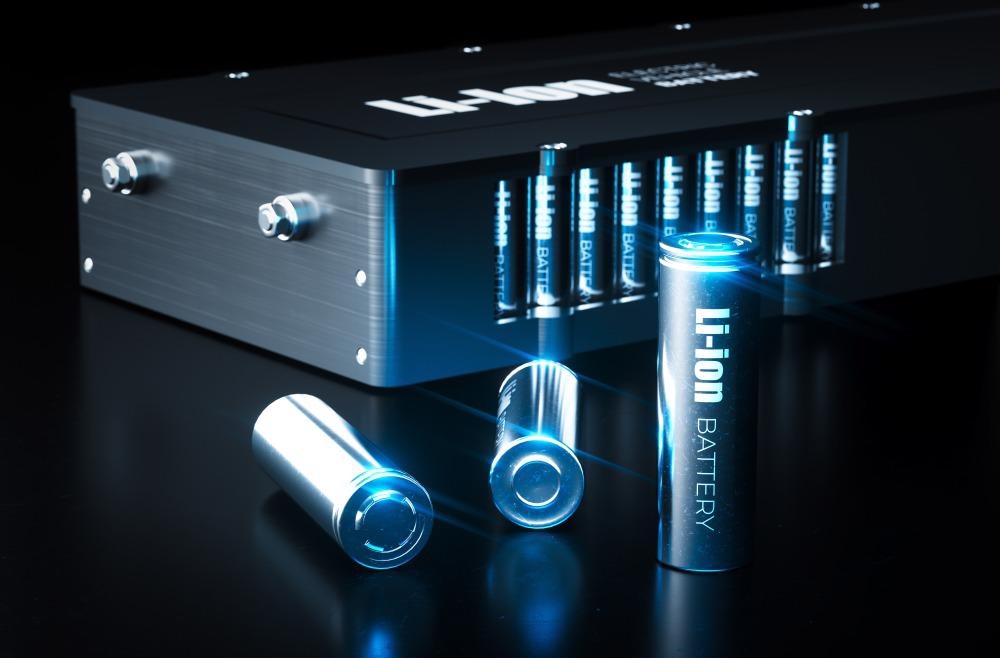In a recent study published in the journal ACS Materials Letters, researchers analyzed the effect of downsizing a lithium superionic conductor, Li10GeP2S12 (LGPS), single-crystal solid-state electrolyte on lithium (Li)-ion diffusion conductivity by bringing it down to a single-digit nanometer (nm) size (i.e., 2-10 nm).

Study: A Nanoscale Design Approach for Enhancing the Li-Ion Conductivity of the Li10GeP2S12 Solid Electrolyte. Image Credit: petrmalinak/Shutterstock.com
LGPS with the smallest particle size of 2.15 nm, i.e., an average volume of 10 nm3, exhibited the highest conductivity value of 15.10 mS cm−1 at 300 K, which was higher than that of the previously achieved maximum value of 12 mS cm−1 at the same temperature. The primary reason behind the increase in ion diffusion conductivity is due to the transformation of the one-dimensional Li-ion conduction mechanism into a three-dimensional mechanism with a decrease in size, especially below 100 nm.
LGPS as Electrolyte in Solid-state Li-ion Batteries
Since the discovery of LGPS solid electrolytes by Kamaya et al. in 2011, solid-state Li-ion batteries (LiBs) have garnered significant attention owing to their high energy density and associated safety during storage and transportation. Its Li-ion conductivity of 12 mS cm−1 at room temperature is significantly higher than many liquid electrolyte-based LiBs. The contributing factor to such high conductivity is its 3D framework crystal structure consisting of negatively charged (GeS4)4− and (PS4)3− tetrahedra, and positively charged Li-ions in corresponding tetrahedral and octahedral coordination.
Furthermore, several studies have shown a decrease in grain boundary or interfacial resistance of sulfide and oxide-based solid electrolytes led to enhanced metal ion transportation. For instance, nanoporous Li3.25P0.95S4 crystal with average particle size reduced from 80-100 nm to ~5 nm exhibits significant improvement in Li-ion conductivity. Similarly, a Li-argyrodite solid electrolyte of particle size ~20 nm has also demonstrated significant Li-ion conductivity. Based on a similar concept, a nanocrystalline LGPS with reduced interfacial resistance may facilitate a 3D Li-ion diffusion conduction mechanism by allowing intergranular ion diffusion.
About the Study
In this study, researchers used molecular dynamics (MD) simulation to analyze the conductivity performance of an LGPS single-crystal after downsizing to 2-10 nm. The simulation was performed on three crystal cells consisting of ~100,000 ions, each with a different particle volume of 10, 100, and 1000 nm3, and for 10 ns with a time step of 1 fs and temperature range of 300-700 K.
The Li-ion self-diffusion data obtained from a three-directional mean square displacement (MSD) analysis was converted into corresponding conductivity values using the Nernst-Einstein equation. A modified Morse potential was used to analyze Ge-S interaction in LGPS, and the atomic charge was evaluated using Bader analysis.
More from AZoM: An Overview of Passive Daytime Radiative Cooling Materials
Observations
The downsizing of LGPS nanocrystals resulted in shortened Li-ion diffusion path along the normal direction (i.e., the primary direction in large LGPS single-crystals) of the LGPS tetrahedra and a reduction in interfacial resistance that facilitated intergranular diffusion in the other two directions. This three-directional isotropic conduction mechanism enhanced Li-ion conductivity to 15.10 mS cm−1 for the least particle volume of 10 nm3 at 300 K. Moreover, this conductivity value was almost three times that of larger single-crystal systems with a conductivity value of 5.87 mS cm−1. The activation energies for all three particle volumes were between 0.21-0.24 eV.
Furthermore, the ion conductivity had a direct correlation with the surface area of the LGPS owing to the presence of high concentrations of defects and microstrains at the surface. The localized cation-cation disorder and a reduction in Li-S coordination due to decreased particle volume also facilitated the enhanced Li-ion conductivity.
Conclusions
In summary, the researchers of this study analyzed the effect of downsizing the single-crystal size of LGPS solid-state electrolyte on Li-ion diffusion conductivity for the potential enhancement of solid-state LiBs. The MD simulation model demonstrated the highest conductivity value of 15.10 mS cm−1 for the smallest particle volume of 10 nm3 at 300, which was higher than the previously recorded value of 12 mS cm−1 and even higher than many liquid electrolyte-based LiBs.
The increase in the conductivity was attributed to two factors resulting as a consequence of downsizing LGPS particle size i.e., formation of three-directional isotropic ion conduction path, localized ionic disorder, and the resulting decrease in Li-S coordination. This finding opens up a new field of study for high-performance solid-state electrolytes at the nanometer level.
Disclaimer: The views expressed here are those of the author expressed in their private capacity and do not necessarily represent the views of AZoM.com Limited T/A AZoNetwork the owner and operator of this website. This disclaimer forms part of the Terms and conditions of use of this website.
Source:
Dawson, J., Islam, M., A Nanoscale Design Approach for Enhancing the Li-Ion Conductivity of the Li10GeP2S12 Solid Electrolyte, ACS Materials Letters, 2022, 4, 424-431, https://pubs.acs.org/doi/10.1021/acsmaterialslett.1c00766